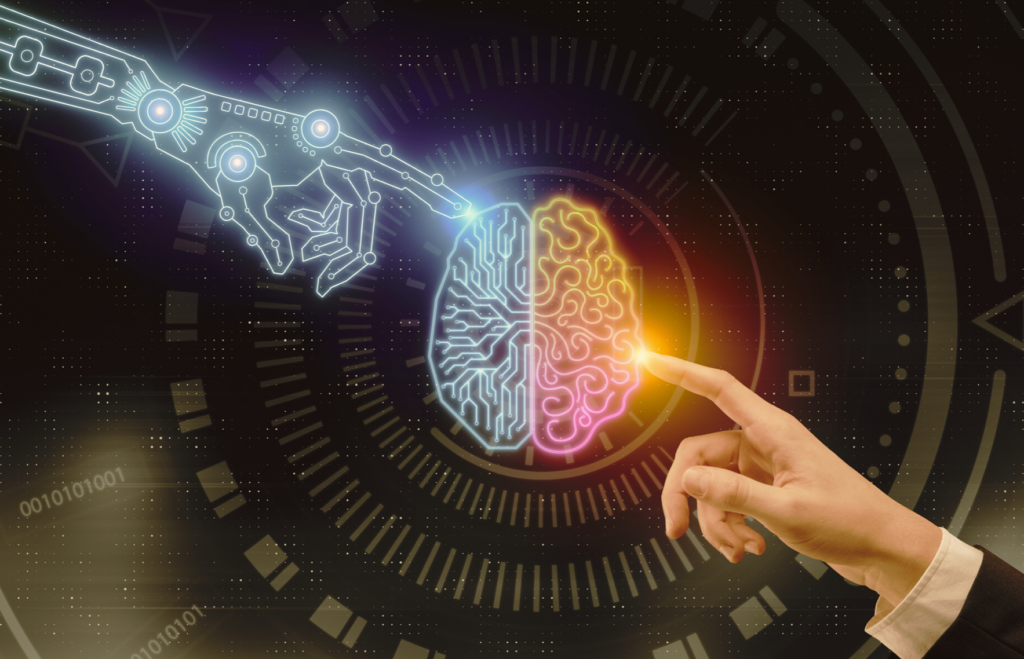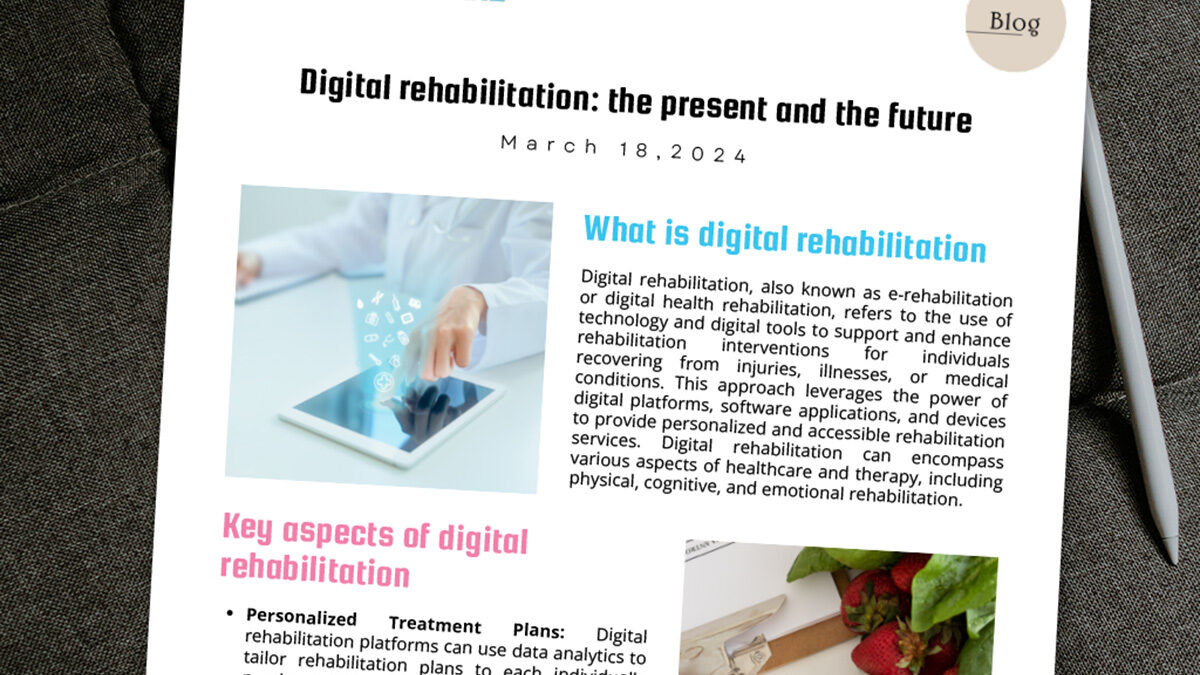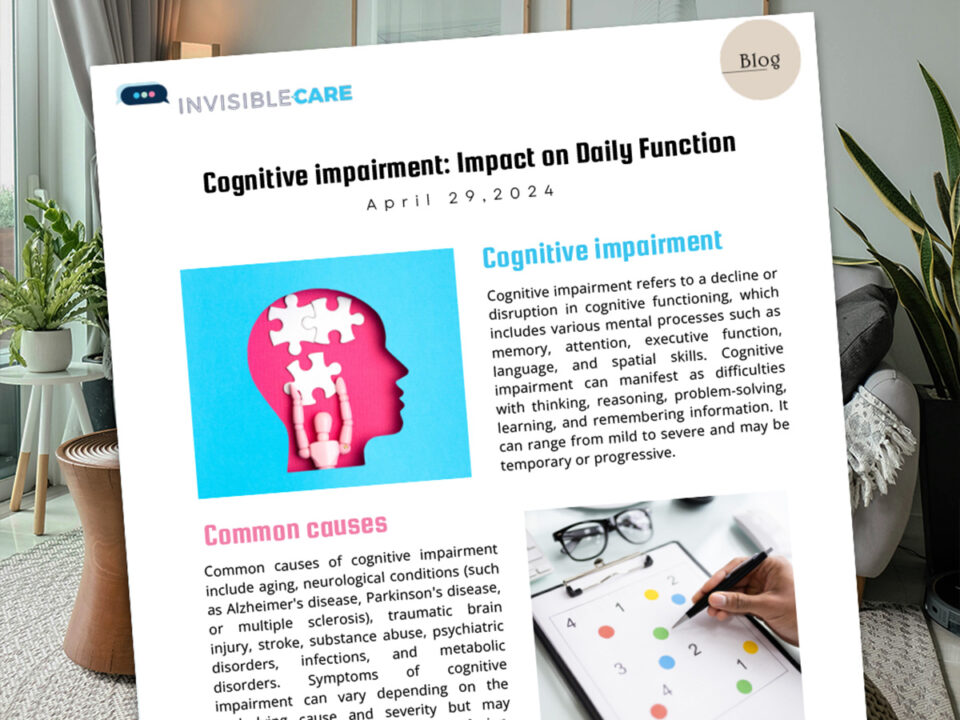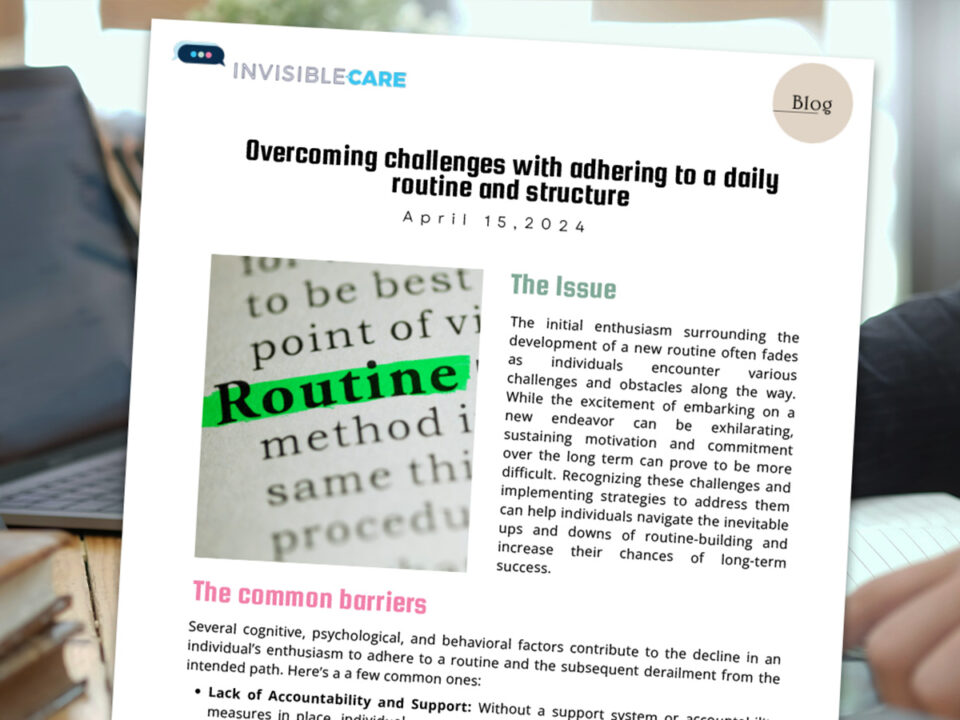
Invisible-care Inc. Awarded Corporate Vision Canadian Business Award
March 13, 2024
Support for integration of learned concepts into daily routines
April 1, 2024
What is digital rehabilitation?
Digital rehabilitation, also known as e-rehabilitation or digital health rehabilitation, refers to the use of technology and digital tools to support and enhance rehabilitation interventions for individuals recovering from injuries, illnesses, or medical conditions. This approach leverages the power of digital platforms, software applications, and devices to provide personalized and accessible rehabilitation services. Digital rehabilitation can encompass various aspects of healthcare and therapy, including physical, cognitive, and emotional rehabilitation.
Key aspects of digital rehabilitation
- Personalized Treatment Plans: Digital rehabilitation platforms can use data analytics to tailor rehabilitation plans to each individual’s needs, adjusting exercises and activities based on progress and challenges.
- Accessibility and Convenience: Digital rehabilitation provides flexibility, allowing individuals to access therapy and exercises from the comfort of their homes or any location with an internet connection.
- Data Collection and Analysis: Digital rehabilitation tools can collect data on an individual’s progress and outcomes. This data can be analyzed to fine-tune interventions and measure the effectiveness of the rehabilitation program.
- Scalable and cost-effective: In rehabilitation, digital therapeutics offer scalable and cost-effective solutions to prevent, manage, or treat medical conditions and monitor patient progress.

The Present
- Telehealth and Teletherapy: Telehealth platforms allow healthcare providers to deliver rehabilitation services remotely through video calls, text messaging, or other digital communication methods. This is particularly beneficial for individuals who have difficulty travelling to physical therapy or cognitive therapy sessions.
- Mobile Apps and Wearable Devices: Mobile applications and wearable devices can be used to track progress, provide exercise instructions, and offer real-time feedback. These tools can be particularly helpful for physical rehabilitation, guiding individuals through exercises and monitoring their performance.
- Virtual Reality (VR) and Augmented Reality (AR): Virtual reality and augmented reality technologies can create immersive environments for rehabilitation. They can be used to simulate real-world scenarios that challenge cognitive and physical abilities, making therapy engaging and effective.
- Cognitive Rehabilitation Software: Digital tools can provide cognitive training exercises to help individuals recover or enhance cognitive functions like memory, attention, problem-solving, and language skills.
- Remote Monitoring: Wearable devices and sensors can track an individual’s movement, vital signs, and progress. Healthcare providers can remotely monitor this data to adjust treatment plans as needed.
- Gamification: Digital rehabilitation often incorporates gamified elements to make therapy more engaging. Game-like interfaces and rewards can motivate individuals to participate actively in their rehabilitation.
- Remote Cueing and Support: Through digital platforms, support workers and coaches can provide real-time and ongoing guidance, support, and feedback to individuals throughout their rehabilitation journey.
The Future
- Artificial Intelligence (AI) Integration: AI-powered algorithms can analyze vast amounts of patient data to identify patterns, predict outcomes, and personalize rehabilitation interventions.
- Robotics and Exoskeletons: Advancements in robotic technology and exoskeletons hold promise for enhancing physical rehabilitation outcomes. These devices can assist with mobility, gait training, and upper limb rehabilitation, enabling patients to regain functional independence more effectively.
Summary
Digital rehabilitation has the potential to extend the reach of rehabilitation services, making them more accessible to a wider range of individuals. However, it’s important to ensure that the chosen digital tools are evidence-based, secure, user-friendly, and well-suited to the specific needs of the individual undergoing rehabilitation. Healthcare professionals play a crucial role in guiding individuals through the use of digital rehabilitation tools and tailoring interventions to achieve optimal outcomes.






